Themed collection Celebrating the 75th Anniversary of the Korean Chemical Society (KCS)

Celebrating the 75th Anniversary of the Korean Chemical Society
The 52nd President of the Korean Chemical Society (2020–2021).
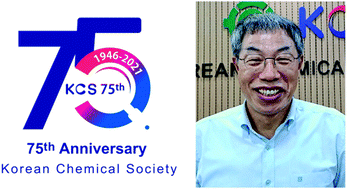
Chem. Commun., 2021,57, 10660-10660
https://doi.org/10.1039/D1CC90335G
Machine-enabled inverse design of inorganic solid materials: promises and challenges
The grand challenge of materials science, discovery of novel materials with target properties, can be greatly accelerated by machine-learned inverse design strategies.
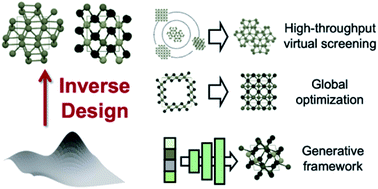
Chem. Sci., 2020,11, 4871-4881
https://doi.org/10.1039/D0SC00594K
Mechanisms of catalytic reduction of CO2 with heme and nonheme metal complexes
This critical review discusses the thermal and photocatalytic mechanisms of one-, two-, four-, six- and eight-electron reduction of CO2 with metal complex catalysts.
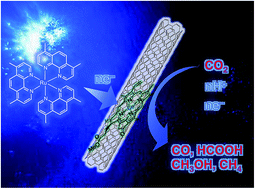
Chem. Sci., 2018,9, 6017-6034
https://doi.org/10.1039/C8SC02220H
Emerging plasmonic nanostructures for controlling and enhancing photoluminescence
Here, we review recent advances and provide perspectives in photoluminescence modulation and enhancement with plasmonic nanostructures.
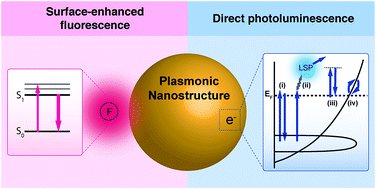
Chem. Sci., 2017,8, 4696-4704
https://doi.org/10.1039/C7SC01441D
Advances in transition metal-free deborylative transformations of gem-diborylalkanes
This article highlights recent advances on the base-promoted deborylative carbon–carbon and carbon–boron bond-forming reactions using gem-diborylalkanes as the sources of α-borylcabanions.
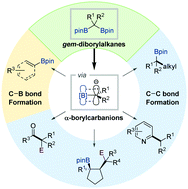
Chem. Commun., 2021,57, 4346-4353
https://doi.org/10.1039/D1CC01048D
Proteins as diverse, efficient, and evolvable scaffolds for artificial metalloenzymes
We have extracted and categorized the desirable properties of proteins that are adapted as the scaffolds for artificial metalloenzymes.
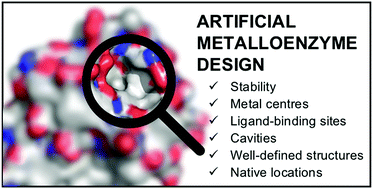
Chem. Commun., 2020,56, 9586-9599
https://doi.org/10.1039/D0CC03137B
Metal–organic complex-based chemodynamic therapy agents for cancer therapy
This feature article summarizes the recent progress in the study of chemodynamic therapy agents based on metal–organic complexes.

Chem. Commun., 2020,56, 8332-8341
https://doi.org/10.1039/D0CC03012K
Cucurbit[n]uril-based amphiphiles that self-assemble into functional nanomaterials for therapeutics
In this feature article, the two types (molecular amphiphile and supramolecular amphiphile) of CB-based amphiphiles, their self-assemblies and their applications for useful nanotherapeutics and theranostics are presented with future perspectives.
![Graphical abstract: Cucurbit[n]uril-based amphiphiles that self-assemble into functional nanomaterials for therapeutics](/en/Image/Get?imageInfo.ImageType=GA&imageInfo.ImageIdentifier.ManuscriptID=C9CC05567C&imageInfo.ImageIdentifier.Year=2019)
Chem. Commun., 2019,55, 10654-10664
https://doi.org/10.1039/C9CC05567C
Atomic layer deposition for efficient and stable perovskite solar cells
Extended understandings of perovskite solar cells by recent ALD application studies as well as challenges toward enhancing the efficiency and stability will be addressed.
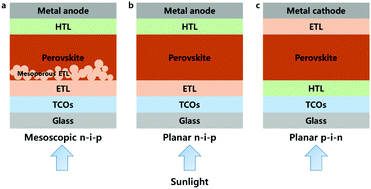
Chem. Commun., 2019,55, 2403-2416
https://doi.org/10.1039/C8CC09578G
Self-doped colloidal semiconductor nanocrystals with intraband transitions in steady state
The tunable bandgap energy has been recognized as a prominent feature of the colloidal semiconductor nanocrystal, also called the colloidal quantum dot (CQD).
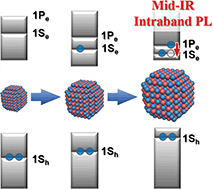
Chem. Commun., 2018,54, 8435-8445
https://doi.org/10.1039/C8CC02488J
Metal coordination and metal activation abilities of commonly unreactive chloromethanes toward metal–organic frameworks
The commonly inert chloromethanes, dichloromethane and trichloromethane, can exchange other solvents bonded at open coordination sites in metal–organic frameworks, providing a new route to activate the open coordination sites for subsequent use in applications.
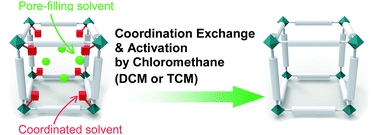
Chem. Commun., 2018,54, 6458-6471
https://doi.org/10.1039/C8CC02348D
Low-voltage-driven soft actuators
A key strategy for achieving high-performance polymer actuators that can be operated with a small battery is the design of polymer electrolytes.
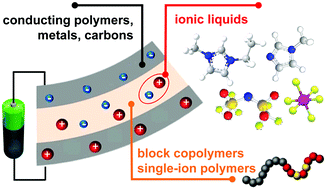
Chem. Commun., 2018,54, 4895-4904
https://doi.org/10.1039/C8CC01670D
Tracking reaction dynamics in solution by pump–probe X-ray absorption spectroscopy and X-ray liquidography (solution scattering)
TRXL and TRXAS are powerful techniques for real-time probing of structural and electronic dynamics of photoinduced reactions in solution phase.
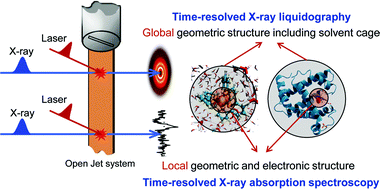
Chem. Commun., 2016,52, 3734-3749
https://doi.org/10.1039/C5CC08949B
A novel class of nonlinear optical materials based on host–guest composites: zeolites as inorganic crystalline hosts
This article summarizes the current status and future perspectives of zeolite-based second order and third order nonlinear optical materials.
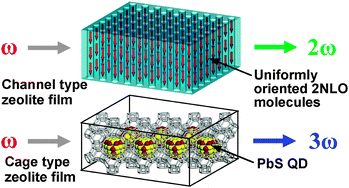
Chem. Commun., 2012,48, 4659-4673
https://doi.org/10.1039/C2CC30919J
Electronic effects of nano-confinement in functional organic and inorganic materials for optoelectronics
This review provides a comprehensive overview of the electronic effects of nano-confinement (from 1D to 3D geometries) on optoelectronic materials and their applications.
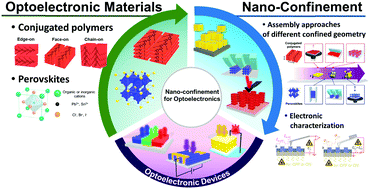
Chem. Soc. Rev., 2021,50, 3585-3628
https://doi.org/10.1039/D0CS01501F
Revisiting imidazolium receptors for the recognition of anions: highlighted research during 2010–2019
Research developments of imidazolium receptors for anions (such as DNA, RNA, ATP, etc.) during 2010–2019 are comprehensively discussed.
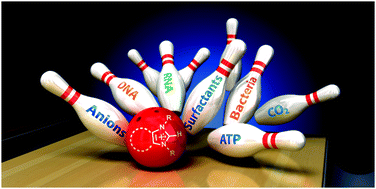
Chem. Soc. Rev., 2021,50, 589-618
https://doi.org/10.1039/D0CS00642D
The rise of metal–organic polyhedra
Metal–organic polyhedra (MOPs) are comprehensively summarized and classified based on topology, providing new directions for MOP design and forthcoming applications.
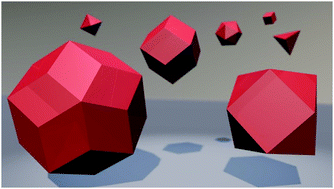
Chem. Soc. Rev., 2021,50, 528-555
https://doi.org/10.1039/D0CS00443J
From CO2 methanation to ambitious long-chain hydrocarbons: alternative fuels paving the path to sustainability
Comprehensive insight into the thermochemical, photochemical and electrochemical reduction of CO2 to methane and long-chain hydrocarbons as alternative fuels.
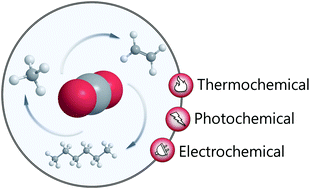
Chem. Soc. Rev., 2019,48, 205-259
https://doi.org/10.1039/C8CS00527C
Hollow nanoparticles as emerging electrocatalysts for renewable energy conversion reactions
Hollow structured nanocatalysts show a great potential as next generation electrocatalysts for future renewable and sustainable energy conversion technologies.
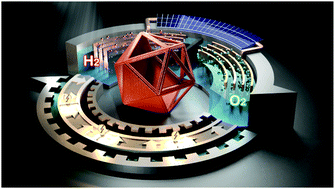
Chem. Soc. Rev., 2018,47, 8173-8202
https://doi.org/10.1039/C8CS00336J
Fluorescent chemical probes for accurate tumor diagnosis and targeting therapy
This review focuses on small molecular ligand-targeted fluorescent imaging probes and fluorescent theranostics, including their design strategies and applications in clinical tumor treatment.
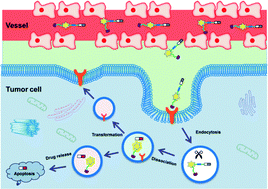
Chem. Soc. Rev., 2017,46, 2237-2271
https://doi.org/10.1039/C6CS00908E
Excited-state structural relaxation and exciton delocalization dynamics in linear and cyclic π-conjugated oligothiophenes
π-Conjugated oligothiophene is considered a chain segment of its polymeric counterpart with simper excited-state dynamics and spectral signatures.
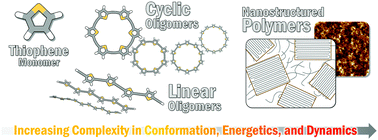
Chem. Soc. Rev., 2018,47, 4279-4294
https://doi.org/10.1039/C7CS00605E
Fluorogenic reaction-based prodrug conjugates as targeted cancer theranostics
This Tutorial Review will describe various fluorogenic reaction-based prodrug strategies used for targeted theranostic drug delivery.
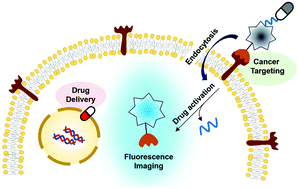
Chem. Soc. Rev., 2018,47, 28-52
https://doi.org/10.1039/C7CS00557A
Hydrogen-bond promoted nucleophilic fluorination: concept, mechanism and applications in positron emission tomography
This Tutorial Review summarizes the recent breakthroughs in SN2-type nucleophilic fluorination reactions using alkali metal fluorides promoted by protic solvents, inducing excellent selectivity and high reaction rates.
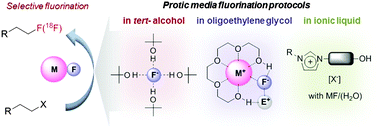
Chem. Soc. Rev., 2016,45, 4638-4650
https://doi.org/10.1039/C6CS00286B
Recent advances in magnetic nanoparticle-based multi-modal imaging
This tutorial review discusses the concept and up-to-date applications of magnetic nanoparticle-based multi-modal imaging.
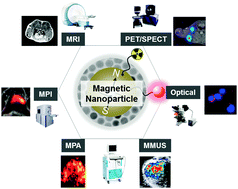
Chem. Soc. Rev., 2015,44, 4501-4516
https://doi.org/10.1039/C4CS00345D
Organic guest molecule induced ultrafast breathing of an epitaxially grown metal–organic framework on a self-assembled monolayer
Facile preparation of an epitaxial metal–organic framework thin film and its breathing behavior responding to organic solvent molecules.

Chem. Commun., 2021,57, 10158-10161
https://doi.org/10.1039/D1CC03721H
Characterization of heterogeneous aryl–Pd(II)–oxo clusters as active species for C–H arylation
The surface oxidation of Pd nanoparticles with [Ph2I]BF4 resulted in the generation of Pd(II)–aryl–oxo clusters, which led to C–H arylation in high yields and regioselectivity.
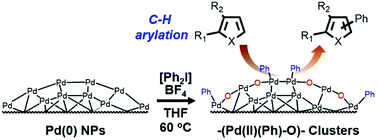
Chem. Commun., 2020,56, 14404-14407
https://doi.org/10.1039/D0CC06716D
Ascorbic acid-mediated reductive disassembly of Fe3+-tannic acid shells in degradable single-cell nanoencapsulation
The simple use of vitamin C leads to the reductive disassembly of the Fe3+-TA complex and in situ artificial shell degradation in single-cell nanoencapsulation.
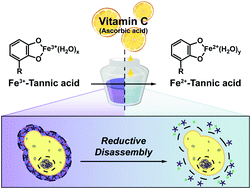
Chem. Commun., 2020,56, 13748-13751
https://doi.org/10.1039/D0CC05856D
Strapped calix[4]pyrrole as a lithium salts selective receptor through separated ion-pair binding
A triazole-bearing strapped calix[4]pyrrole (1) was synthesized as a lithium salt selective ion pair receptor.
![Graphical abstract: Strapped calix[4]pyrrole as a lithium salts selective receptor through separated ion-pair binding](/en/Image/Get?imageInfo.ImageType=GA&imageInfo.ImageIdentifier.ManuscriptID=D0CC04809G&imageInfo.ImageIdentifier.Year=2020)
Chem. Commun., 2020,56, 10541-10544
https://doi.org/10.1039/D0CC04809G
Metallosupramolecules of pillar[5]-bis-trithiacrown including a mercury(II) iodide ion-triplet complex
A combination of pillar[5]-bis-trithiacrown and HgI2 afforded a contact ion-triplet complex in which the host encapsulates the (I−–Hg2+–I−) entity via Hg2+⋯π and C–H⋯I− interactions, reflecting geometrical complementarity.
![Graphical abstract: Metallosupramolecules of pillar[5]-bis-trithiacrown including a mercury(ii) iodide ion-triplet complex](/en/Image/Get?imageInfo.ImageType=GA&imageInfo.ImageIdentifier.ManuscriptID=D0CC03902K&imageInfo.ImageIdentifier.Year=2020)
Chem. Commun., 2020,56, 10135-10138
https://doi.org/10.1039/D0CC03902K
Electropolymerization in a confined nanospace: synthesis of PEDOT nanoparticles in emulsion droplet reactors
Size controlled PEDOT nanoparticles were synthesized by confined space electrochemistry inside emulsions.
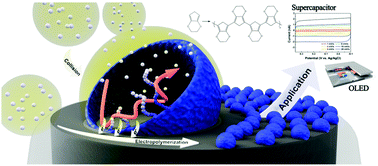
Chem. Commun., 2020,56, 9624-9627
https://doi.org/10.1039/D0CC03834B
Longitudinal shape evolution of Ag2S nanoparticles from nanospheres, rhombic dodecahedrons, nanorods, to nanocubes
Longitudinal shape evolution of Ag2S nanoparticles is reported. Ag2S nanospheres turn into rhombic dodecahedrons, and sequentially converted into nanodumbbells, nanorods, and nanocubes by oriented attachements along the 〈−104〉 and 〈−110〉 planes.

Chem. Commun., 2020,56, 9655-9658
https://doi.org/10.1039/D0CC02465A
Nucleophilic reactivity of a mononuclear cobalt(III)–bis(tert-butylperoxo) complex
A mononuclear cobalt(III)–bis(tert-butylperoxo) adduct (CoIII–(OOtBu)2) bearing a tetraazamacrocyclic ligand was synthesized and characterized using various physicochemical methods, such as X-ray, UV-vis, ESI-MS, EPR, and NMR analyses.

Chem. Commun., 2020,56, 9449-9452
https://doi.org/10.1039/D0CC03385E
Janus amphiphilic nanoplatelets as smart colloid surfactants with complementary face-to-face interactions
A new type of colloidal surfactant that not only has a nanoscale platelet geometry, but can also induce complementary face-to-face interactions among Pickering emulsion droplets is introduced.
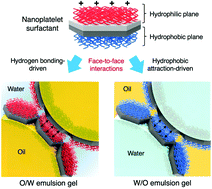
Chem. Commun., 2020,56, 6031-6034
https://doi.org/10.1039/D0CC02231D
Molecular balloon, Pd6L8 cages: recognition of alkyl sulfate surfactants
Significant structural contraction and expansion of flexible Pd6L8 cages by encapsulation of alkyl sulfate were demonstrated. The contact angles on the fine-ground microcrystal layers shift according to the chain length of the alkyl sulfate.

Chem. Commun., 2020,56, 2841-2844
https://doi.org/10.1039/C9CC09742B
A cyotosol-selective nitric oxide bomb as a new paradigm of an anticancer drug
Dual pH and redox-sensitive polymeric NO delivery micelles act as a cytosol-selective NO bomb for efficient anticancer therapy.

Chem. Commun., 2019,55, 14789-14792
https://doi.org/10.1039/C9CC08028G
Synthesis of o-carborane-functionalized metal–organic frameworks through ligand exchanges for aggregation-induced emission in the solid state
o-Carborane-functionalized MOFs were successfully prepared through ligand exchanges, and the PL were drastically shifted by AIE in the solid state.
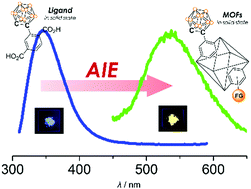
Chem. Commun., 2019,55, 11844-11847
https://doi.org/10.1039/C9CC06386B
Tuning of the flexibility in metal–organic frameworks based on pendant arm macrocycles
An isostructural series of flexible MOFs based on pendant arm macrocycles was developed to tune flexibility depending on functional groups.
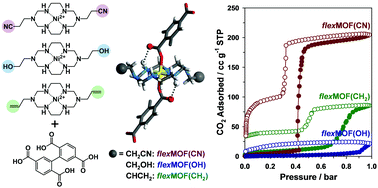
Chem. Commun., 2019,55, 8832-8835
https://doi.org/10.1039/C9CC02819F
Tunneling and thermoelectric characteristics of N-heterocyclic carbene-based large-area molecular junctions
Tunneling and thermoelectric characteristics of NHC-based large-area junctions were demonstrated for the first time.

Chem. Commun., 2019,55, 8780-8783
https://doi.org/10.1039/C9CC01585J
Synthesis of nanostructured P2-Na2/3MnO2 for high performance sodium-ion batteries
Nanostructured P2-Na2/3MnO2 prepared by a novel synthetic method delivers a high initial capacity (170 mA h g−1) with excellent rate capability.
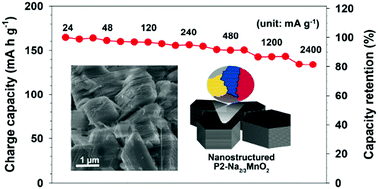
Chem. Commun., 2019,55, 4757-4760
https://doi.org/10.1039/C9CC01215J
Nanoparticulate and microporous solid acid catalysts bearing aliphatic sulfonic acids for biomass conversion
Nano-sized and microporous solid acid catalysts were developed for fructose conversion to HMF.
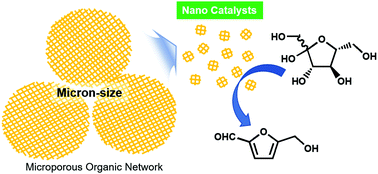
Chem. Commun., 2019,55, 3697-3700
https://doi.org/10.1039/C9CC00436J
Unbalanced MOF-on-MOF growth for the production of a lopsided core–shell of MIL-88B@MIL-88A with mismatched cell parameters
Atypical unbalanced MOF-on-MOF growth is demonstrated for the production of a lopsided core–shell of MIL-88B@MIL-88A with mismatched cell parameters.
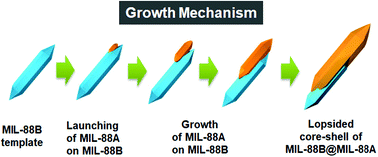
Chem. Commun., 2019,55, 43-46
https://doi.org/10.1039/C8CC08456D
Incorporation of STED technique into single-molecule spectroscopy to break the concentration limit of diffusing molecules in single-molecule detection
Incorporation of STED into ALEX-FRET increases the concentration limit of single-molecule detection by 100-fold to 5 nM.
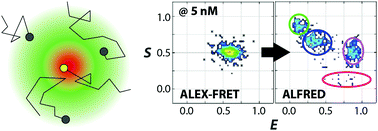
Chem. Commun., 2018,54, 9667-9670
https://doi.org/10.1039/C8CC05726E
Efficient separation of C2 hydrocarbons in a permanently porous hydrogen-bonded organic framework
A microporous hydrogen-bonded organic framework HOF-BTB efficiently separates C2 hydrocarbons from C2/CH4 binary gas mixtures under dynamic mixture flow conditions.

Chem. Commun., 2018,54, 9360-9363
https://doi.org/10.1039/C8CC04139C
Effect of the metal–support interaction on the activity and selectivity of methanol oxidation over Au supported on mesoporous oxides
To elucidate the factors affecting the catalytic properties of supported Au catalysts on the metal oxide support we investigated Au NPs deposited on crystallized mesoporous transition-metal oxides (m-oxides: Co3O4, NiO, and α-Fe2O3) prepared using the nanocasting method.

Chem. Commun., 2018,54, 8174-8177
https://doi.org/10.1039/C8CC04295K
Unexpected halide anion binding modes in meso-bis-ethynyl picket-calix[4]pyrroles: effects of meso-π (ethynyl) extension
meso-Ethynyl extended aryl-picket calix[4]pyrroles 2 and 3 are designed and synthesized by directly anchoring arylethynyl groups at diametrically opposed meso-positions.
![Graphical abstract: Unexpected halide anion binding modes in meso-bis-ethynyl picket-calix[4]pyrroles: effects of meso-π (ethynyl) extension](/en/Image/Get?imageInfo.ImageType=GA&imageInfo.ImageIdentifier.ManuscriptID=C8CC04393K&imageInfo.ImageIdentifier.Year=2018)
Chem. Commun., 2018,54, 7936-7939
https://doi.org/10.1039/C8CC04393K
Piers’ borane-mediated hydrosilylation of epoxides and cyclic ethers
This work represents the first diarylborane-catalyzed hydrosilylation of epoxides and cyclic ethers.

Chem. Commun., 2018,54, 7243-7246
https://doi.org/10.1039/C8CC03741H
Gold-catalyzed [5+2] cycloaddition of quinolinium zwitterions and allenamides as an efficient route to fused 1,4-diazepines
Herein, we demonstrate a new catalytic cycloaddition of quinolinium zwitterions involving a gold-bound allylic cation intermediate.
![Graphical abstract: Gold-catalyzed [5+2] cycloaddition of quinolinium zwitterions and allenamides as an efficient route to fused 1,4-diazepines](/en/Image/Get?imageInfo.ImageType=GA&imageInfo.ImageIdentifier.ManuscriptID=C8CC02570C&imageInfo.ImageIdentifier.Year=2018)
Chem. Commun., 2018,54, 6911-6914
https://doi.org/10.1039/C8CC02570C
Regioselective C–H alkenylation of imidazoles and its application to the synthesis of unsymmetrically substituted benzimidazoles
A palladium-catalyzed C5-selective alkenylation of imidazoles has been developed and applied to the synthesis of alkenyl imidazoles and multi-substituted benzimidazoles.
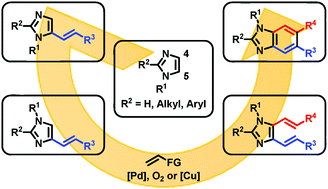
Chem. Commun., 2018,54, 6879-6882
https://doi.org/10.1039/C8CC02405G
An air-stable N-heterocyclic carbene iminoxyl borate radical zwitterion
The presented N-heterocyclic carbene iminoxyl borate radical zwitterion shows remarkable stability toward air, moisture, and silica gel.
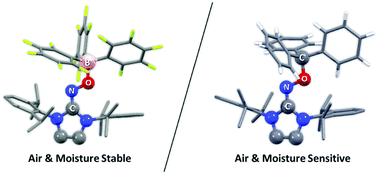
Chem. Commun., 2018,54, 6824-6827
https://doi.org/10.1039/C8CC01399C
A chiral aluminum solvating agent (CASA) for 1H NMR chiral analysis of alcohols at low temperature
A chiral aluminum solvating agent (CASA) was demonstrated to be a general and efficient reagent for 1H NMR chiral analysis of alcohols.

Chem. Commun., 2018,54, 6804-6807
https://doi.org/10.1039/C8CC00574E
A salen–Al/carbazole dyad-based guest–host assembly: enhancement of luminescence efficiency via intramolecular energy transfer
A novel class of salen–Al/carbazole dyads was synthesized. The dyads exhibited enhanced luminescence efficiency through a significant IET process.
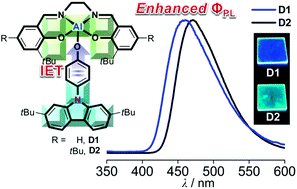
Chem. Commun., 2018,54, 4712-4715
https://doi.org/10.1039/C8CC01528G
Arylsilylation of aryl halides using the magnetically recyclable bimetallic Pd–Pt–Fe3O4 catalyst
Transition metal-catalyzed silylations have typically involved the use of heterogeneous recyclable catalytic systems.
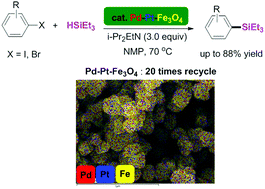
Chem. Commun., 2018,54, 3492-3495
https://doi.org/10.1039/C7CC09926F
Control of tandem isomerizations: flow-assisted reactions of o-lithiated aryl benzyl ethers
We report a flow microreactor platform for controlling tandem isomerizations of o-lithiated aryl benzyl ethers based on precise residence time control.
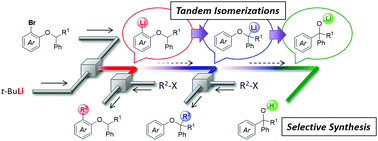
Chem. Commun., 2018,54, 547-550
https://doi.org/10.1039/C7CC08460A
Highly monodisperse supported metal nanoparticles by basic ammonium functionalization of mesopore walls for industrially relevant catalysis
A strategy for achieving a high dispersion of metal and metal oxide nanoparticles in a mono-modal fashion is developed.
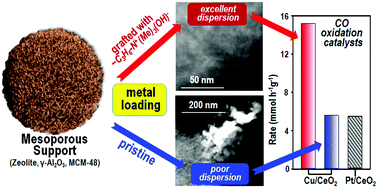
Chem. Commun., 2017,53, 3810-3813
https://doi.org/10.1039/C7CC00479F
Analyte-directed formation of emissive excimers for the selective detection of polyamines
A convenient and selective method for the sensing of polyamines, which are important biomarkers for cancers, has been developed. The fluorescence light-up mechanism utilizes the analyte-induced formation of emissive excimers of a sulfonated probe. Detection is achieved in aqueous media and artificial urine samples, as indicated by an excellent fluorescence turn-on signal with a large spectral shift.

Chem. Commun., 2016,52, 10648-10651
https://doi.org/10.1039/C6CC05761F
Selective dual-purpose photocatalysis for simultaneous H2 evolution and mineralization of organic compounds enabled by a Cr2O3 barrier layer coated on Rh/SrTiO3
Dual-purpose photocatalysis for H2 evolution with the simultaneous degradation of organic pollutants was achieved.
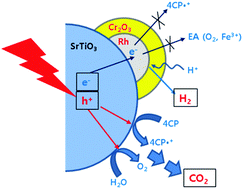
Chem. Commun., 2016,52, 9636-9639
https://doi.org/10.1039/C6CC04260K
Catalytic transformation of esters of 1,2-azido alcohols into α-amido ketones
The esters of 1,2-azido alcohols were transformed into α-amido ketones without external oxidants through the Ru-catalyzed formation of N–H imines with the liberation of N2 followed by intramolecular migration of the acyl moiety.
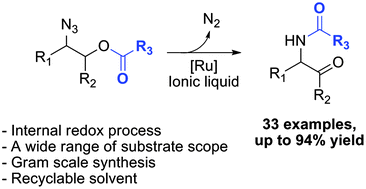
Chem. Commun., 2016,52, 6549-6552
https://doi.org/10.1039/C6CC02063A
An ultrasensitive and incubation-free electrochemical immunosensor using a gold-nanocatalyst label mediating outer-sphere-reaction-philic and inner-sphere-reaction-philic species
An outer-sphere-reaction-philic and inner-sphere-reaction-philic Au-nanocatalyst label can mediate two different types of redox species.
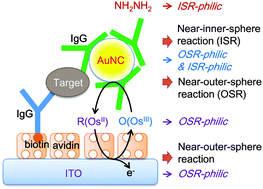
Chem. Commun., 2016,52, 5884-5887
https://doi.org/10.1039/C6CC00353B
Unambiguous characterization of anisotropic foldamer packing in a foldecture with an elongated hexagonal plate shape
We report the first complete characterization of the directional molecular packing patterns of individual foldamers within a new foldecture with a well defined hexagonal plate shape.

Chem. Commun., 2016,52, 5250-5253
https://doi.org/10.1039/C6CC00502K
Efficient, symmetric oligomer hole transporting materials with different cores for high performance perovskite solar cells
This communication provides information about the study and development of the properties of novel hole transporting materials (HTMs) for perovskite solar cells. This communication describes the synthesis of three HTMs incorporating 3,4-ethylenedioxythiophene (EDOT) and 2,1,3-benzothiadiazole (BTD) cores.
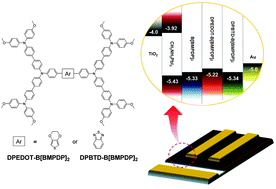
Chem. Commun., 2015,51, 15506-15509
https://doi.org/10.1039/C5CC05814G
The controlled synthesis of plasmonic nanoparticle clusters as efficient surface-enhanced Raman scattering platforms
Au nanoparticle clusters were prepared by fine control over the galvanic replacement of Ag nanoparticles with Au precursors.

Chem. Commun., 2015,51, 8793-8796
https://doi.org/10.1039/C4CC10377G
Manual assembly of nanocrystals for enhanced photoelectrochemical efficiency of hematite film
A (012) plane oriented hematite film with secondary growth of organized microcrystals showed promising photoelectrochemical efficiency compared with a randomly oriented film.
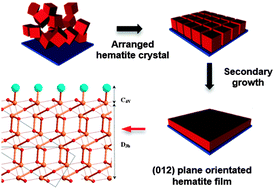
Chem. Commun., 2015,51, 6407-6410
https://doi.org/10.1039/C5CC00200A
A seed-engineering approach toward a hollow nanoreactor suitable for the confined synthesis of less-noble Ni-based nanocrystals
A hollow nanoreactor suitable for the cultivation of Ni-nanocrystals was developed through a distinct seed-engineering strategy, which involved the assembly of a catalytically active Au/Pd-heterojunction-nanocrystal inside the hollow silica nanoshell.
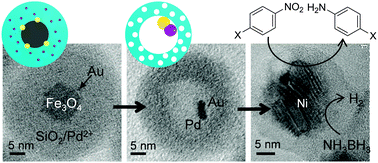
Chem. Commun., 2015,51, 499-502
https://doi.org/10.1039/C4CC07306A
A novel self-assembling nanoparticle of Ag–Bi with high reactive efficiency
A novel nanoparticle of Ag–Bi shows excellent purification of contaminated water without other supplements.
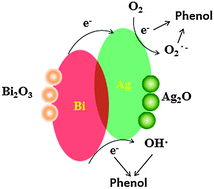
Chem. Commun., 2014,50, 8597-8600
https://doi.org/10.1039/C4CC03300K
High-turnover visible-light photoreduction of CO2 by a Re(I) complex stabilized on dye-sensitized TiO2
Higher photocatalytic CO2 conversion to CO with a turnover number of 435 was achieved by the ternary dye-sensitized systems comprising a dye/TiO2/Re platform.
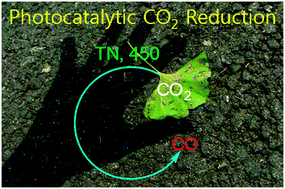
Chem. Commun., 2014,50, 4462-4464
https://doi.org/10.1039/C3CC49744E
Catalyst-mediated yet catalyst-free hydrogels formed by interfacial chemical activation
Catalyst-mediated yet catalyst-free catechol-containing adhesive hydrogels.
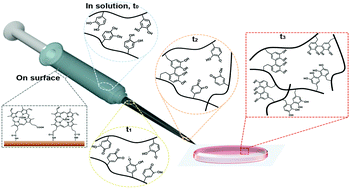
Chem. Commun., 2014,50, 2869-2872
https://doi.org/10.1039/C3CC49043B
Fluorescent and pH-responsive diblock copolymer -coated core–shell CdSe/ZnS particles for a color-displaying, ratiometric pH sensor
A color distinctive, ratiometric pH sensor was demonstrated using pH responsive and fluorescent (PyMMP-b-P2VP) diblock copolymer coated CdSe/ZnS QDs.
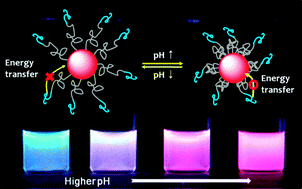
Chem. Commun., 2011,47, 10272-10274
https://doi.org/10.1039/C1CC13848K
Stacked porous tin phosphate nanodisk anodes
Stacked porous octahedral tin phosphate Sn2P2O7 nanodisks, with a thickness and a width of 20 nm and 200 nm, respectively, were prepared from quenching hydrothermally prepared (SnHPO4)2·H2O at 600 °C. The first discharge capacity was 600 mA h g−1 while the capacity retention, even after 220 cycles, was 93%.
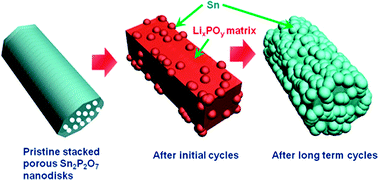
Chem. Commun., 2010,46, 2444-2446
https://doi.org/10.1039/B924381J
Mesostructured material based on [Re6Te8(CN)6]4−cluster and Mn2+: a rational synthesis of hexagonal nonoxidic mesoscale material
A new nonoxidic mesostructured material with highly ordered hexagonal symmetry has been obtained through supramolecular assembly of [Re6Te8(CN)6]4- clusters in the presence of a transition metal cation, Mn2+, with CTAB as a liquid crystal template under hydrothermal conditions.
![Graphical abstract: Mesostructured material based on [Re6Te8(CN)6]4−cluster and Mn2+: a rational synthesis of hexagonal nonoxidic mesoscale material](/en/Image/Get?imageInfo.ImageType=GA&imageInfo.ImageIdentifier.ManuscriptID=B816000G&imageInfo.ImageIdentifier.Year=2009)
Chem. Commun., 2009, 541-543
https://doi.org/10.1039/B816000G
Efficient protein –ligand interaction by guaranteeing mesospacing between immobilized biotins
The streptavidin–biotin interaction on a monolayer of a conically shaped dendrimer was investigated by surface plasmon resonance (SPR) spectroscopy and the interaction on the mesospaced surface was found to be as efficient as the one on the mixed monolayers at a lower concentration of immobilized biotin.
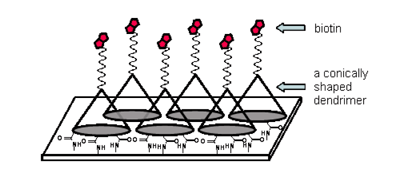
Chem. Commun., 2004, 1316-1317
https://doi.org/10.1039/B403797A